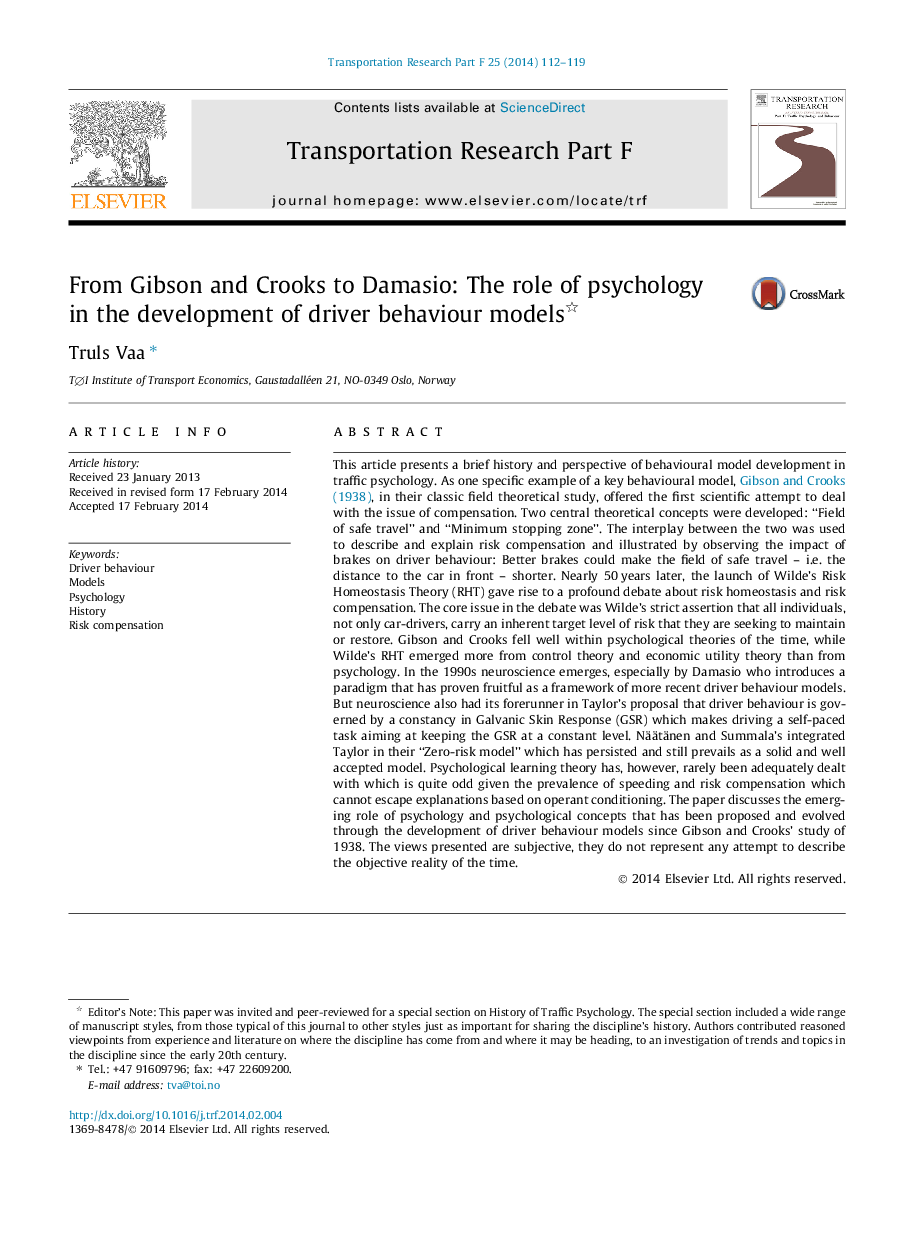| کد مقاله | کد نشریه | سال انتشار | مقاله انگلیسی | نسخه تمام متن |
|---|---|---|---|---|
| 897749 | 915191 | 2014 | 8 صفحه PDF | دانلود رایگان |
• Identifying Gibson and Crooks (1938) as the first to describe risk compensation.
• Discusses the relevance of Yerkes and Dodson (1908) and Miller (1956) in model building.
• Argues that Damasio’s paradigm integrates several driver behaviour models.
• Argues a driver behaviour model is incomplete if personality traits are left out.
This article presents a brief history and perspective of behavioural model development in traffic psychology. As one specific example of a key behavioural model, Gibson and Crooks (1938), in their classic field theoretical study, offered the first scientific attempt to deal with the issue of compensation. Two central theoretical concepts were developed: “Field of safe travel” and “Minimum stopping zone”. The interplay between the two was used to describe and explain risk compensation and illustrated by observing the impact of brakes on driver behaviour: Better brakes could make the field of safe travel – i.e. the distance to the car in front – shorter. Nearly 50 years later, the launch of Wilde’s Risk Homeostasis Theory (RHT) gave rise to a profound debate about risk homeostasis and risk compensation. The core issue in the debate was Wilde’s strict assertion that all individuals, not only car-drivers, carry an inherent target level of risk that they are seeking to maintain or restore. Gibson and Crooks fell well within psychological theories of the time, while Wilde’s RHT emerged more from control theory and economic utility theory than from psychology. In the 1990s neuroscience emerges, especially by Damasio who introduces a paradigm that has proven fruitful as a framework of more recent driver behaviour models. But neuroscience also had its forerunner in Taylor’s proposal that driver behaviour is governed by a constancy in Galvanic Skin Response (GSR) which makes driving a self-paced task aiming at keeping the GSR at a constant level. Näätänen and Summala’s integrated Taylor in their “Zero-risk model” which has persisted and still prevails as a solid and well accepted model. Psychological learning theory has, however, rarely been adequately dealt with which is quite odd given the prevalence of speeding and risk compensation which cannot escape explanations based on operant conditioning. The paper discusses the emerging role of psychology and psychological concepts that has been proposed and evolved through the development of driver behaviour models since Gibson and Crooks’ study of 1938. The views presented are subjective, they do not represent any attempt to describe the objective reality of the time.
Journal: Transportation Research Part F: Traffic Psychology and Behaviour - Volume 25, Part B, July 2014, Pages 112–119
